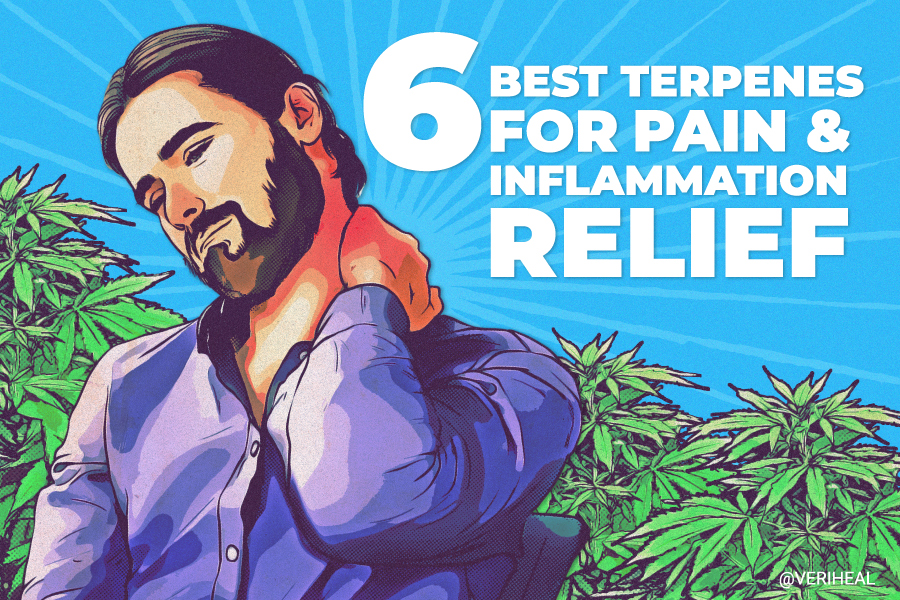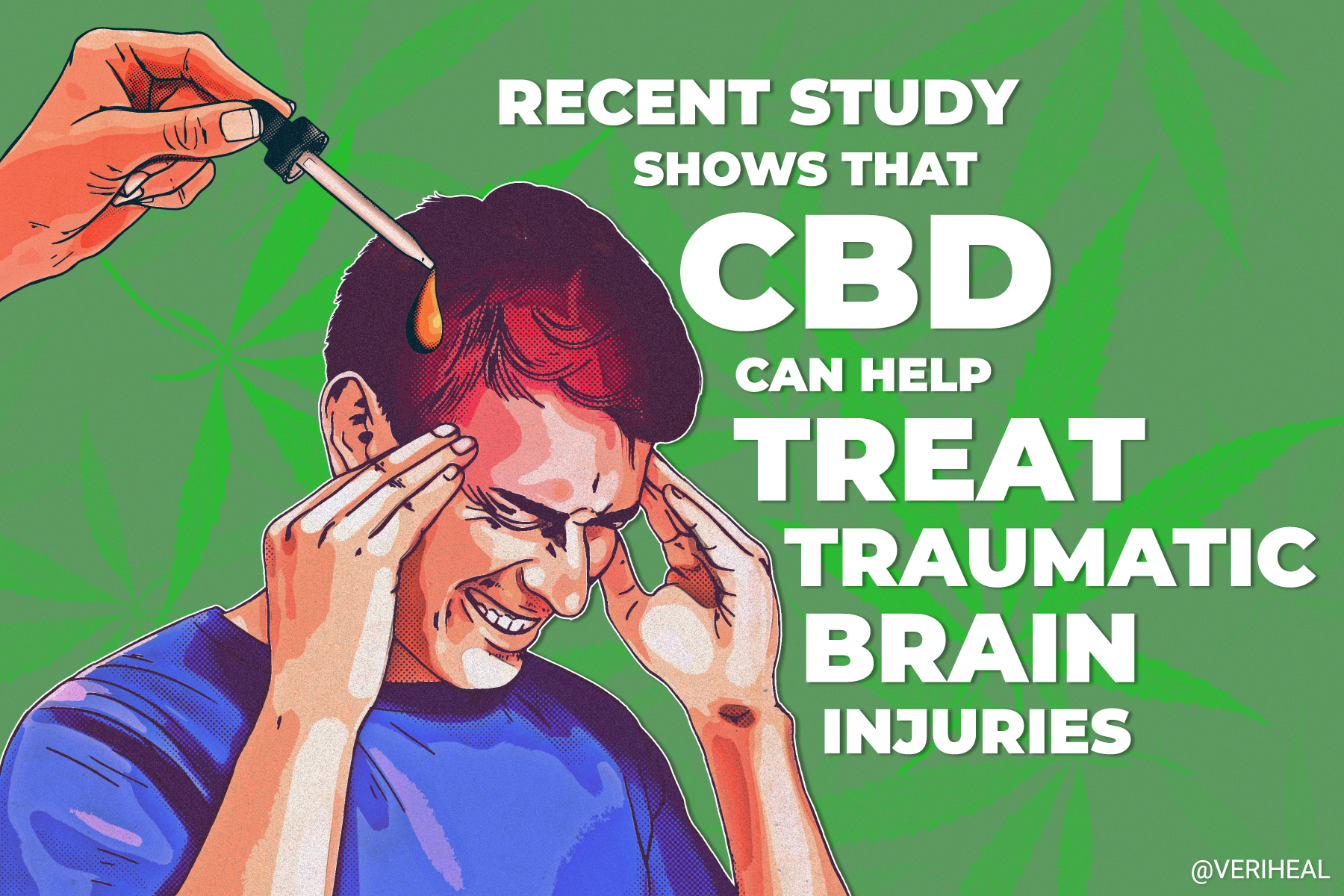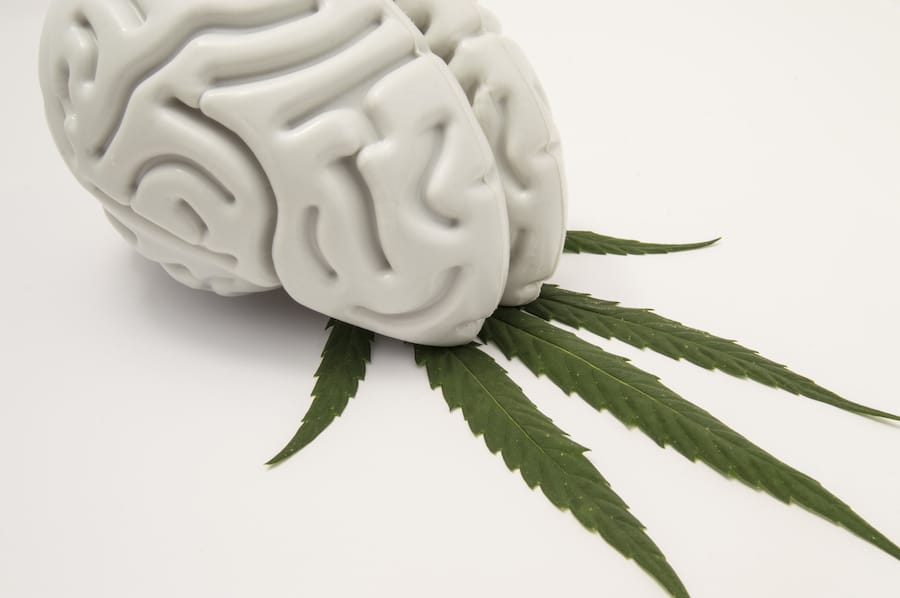Chronic Traumatic Encephalopathy (CTE)

- Chronic Traumatic Encephalopathy: Signs, Symptoms and Types
- Chronic Traumatic Encephalopathy Causes and Complications
- The Role of the Endocannabinoid System in Treating Chronic Traumatic Encephalopathy
- Chronic Traumatic Encephalopathy Treatment: Can Cannabinoids Provide Relief?
- What Preparations of Cannabis are Best for Chronic Traumatic Encephalopathy?
- Talk to Your Doctor About Medical Cannabis
Chronic traumatic encephalopathy (CTE), historically known as dementia pugilistica, occurs in people who have sustained repeated head injuries. CTE is the gradual degradation of brain cells due to traumatic inflammation and it occurs most often in professional athletes or people who have served in the military. It may also occur in people with years of playing contact sports such as boxing, football, rugby, hockey, or lacrosse (7).
A report published in 2017 discovered CTE in 99% of brains donated by National Football League (NFL) players (11).
Although it was formerly known as “punch drunk” syndrome (because it is commonly associated with people who engage in frequent episodes of contact sports like American football and boxing), pretty much anyone with a history of repeated closed-head injuries can be diagnosed with CTE.
According to a recent 2021 article: “It has been estimated that approximately 17% of people with a repetitive concussion or mild TBI develop CTE.” Since almost two-thirds of Americans play organized sports and there are an estimated 1.5-4 million concussions occurring annually, CTE is a significant concern for many people (13).
Despite the fact that most of the available studies are based on post-mortem, ex-athletes, new research is being carried out into the potential safety and efficacy of using medical marijuana for symptomatic relief from CTE.
After suffering a brain injury or repeated concussions, you or a loved one might consider finding a way to ease the often debilitating symptoms of CTE such as pain, mood disturbances, memory issues, difficulty sleeping, and inflammation.
As a natural pain-reliever that could be as powerful as (if not safer than) opioids, cannabis presents promise as an additional form of relief for CTE patients.
Chronic Traumatic Encephalopathy: Signs, Symptoms and Types
The scarcity of CTE research means that it is still widely understudied and is therefore not very well understood. What we do know, however, is that the symptoms generally don’t become apparent for years (or sometimes decades) after the previous brain trauma.
Examples of the most typical symptoms of CTE are similar to Alzheimer’s and Parkinson’s dementias, and include:
- Short-term memory loss, e.g. repeatedly asking the same questions
- Frequent mood swings
- Random bouts of depression, apathy, mania, lability
- Feelings of agitation, aggression, suicidality, anxiousness, and/or frustration
- Worsening confusion and disorientation, e.g. getting lost in familiar surroundings and not knowing your own name/age/what the time is, etc.
Chronic Traumatic Encephalopathy Causes and Complications
Even though scientists are still trying to figure out the exact cause(s) of CTE, certain groups of people are believed to fall into the “high risk” category. They include:
- Victims of domestic violence, frequent assaults, or badly managed epilepsy that results in repeated head injuries
- Athletes who have a history of experiencing repetitive mild traumatic brain injury, e.g. contact sports like American football, rugby, mixed martial arts (MMA), boxing, Brazilian Jiu-Jitsu
- Military veterans who have undergone many blows to the head during their time serving
Ignoring the symptoms of CTE is not recommended, since the disease progresses with time and needs to be differentiated from other causes. Over time CTE may cause the following complications:
- Slurred speech (dysarthria)
- Muscle movement discoordination, stiffness while swallowing (dysphagia)
- Major memory and mood problems
- Parkinson’s disease symptoms (Parkinsonism) including tremor and slow movement
The Role of the Endocannabinoid System in Treating Chronic Traumatic Encephalopathy
The endocannabinoid system (ECS) claims the title for being the largest neurotransmitter system in the human body. Nonetheless, it is one of the most understudied (8).
Mood, memory, cognition, reward, risk, sleep, and hunger are just a few physiological processes that are maintained by the ECS.
Medical marijuana may offer some respite from common CTE symptoms, including the following:
- Aggressiveness, anger and irritability
- Anxiety
- Depression
- Gradual dementia
- Memory loss
- Sleep disturbances
- Self-injury
- Suicidal tendencies
The cannabis plant’s most abundant active compounds THC (delta-9 tetrahydrocannabinol) and CBD (cannabidiol) communicate with your ECS to release a variety of therapeutic effects. Minor cannabinoids like CBDA and CBG are also present in whole cannabis products and are also showing therapeutic promise (3).
Existing research into the effects of cannabinoids on CTE might be limited, but a handful of research efforts indicate that cannabinoids can decrease the brain’s oxidative stress after a traumatic brain injury (3).
Cannabinoids also function as natural neuroprotectants by relieving neurological swelling and impairment (9). As a result of this, damage to the brain is minimized and the recovery process sped up (13).
Chronic Traumatic Encephalopathy Treatment: Can Cannabinoids Provide Relief?
Currently, no cure or treatment has been discovered for CTE. Nonetheless, there are some ways in which you might be able to ease the symptoms. Since the disease primarily affects the cognitive (memory and thinking), cannabis’ neuroprotective effects could prove beneficial.
Cannabinoids, otherwise known as phytocannabinoids, have neuroprotective qualities. In particular, the results of using CBD as a neuroprotective agent lend plenty of support for the use of these cannabis-derived agents in post-traumatic, inflammatory, and neurodegenerative syndromes and further study into CTE prevention.
According to one review published in 2021, “recent evidence suggests the therapeutic potential of cannabinoid-based drugs for a wide range of medical conditions, including neurological and psychiatric disorders,” due to the ability of cannabinoids to modulate the ECS, and therefore cognitive abilities such as mood, stress, and sleep (6).
What’s more, the soothing effects of THC have been shown to improve behavioral problems. A 2019 study from Washington State University study learned that varying levels of THC and CBD can help to fight stress, agitation, depression and anxiety — emotional symptoms reported in many cases of chronic traumatic encephalopathy (2). Plus, CBD can promote a restful night’s sleep (14).
The neuroprotective effects of CBD were outlined in the study, “Cannabis Therapeutics and the Future of Neurology”. “Cannabinoids are particularly relevant in their ability to counteract “glutamate excitotoxicity,” which leads to neuronal demise after traumatic brain injury (TBI),” wrote the study authors (13).
Numerous companies around the world are actively studying the neuroprotective effects of cannabinoids. What’s more, Patent No. 6630507 was filed by the U.S. Department of Health stating that CBD is a neuroprotective antioxidant, thus affirming that cannabinoids may be able to prevent brain trauma damage (5).
Although cannabis could possess the natural capabilities to provide an immense level of symptomatic relief, it’s important to note that the effects are only temporary. Long-term studies are still being done to determine if there is further impact on the underlying factors in conditions like CTE and other cognitive disorders and dementias. Make sure you speak with your doctor before consuming cannabis as a treatment option for chronic traumatic encephalopathy.
What Preparations of Cannabis are Best for Chronic Traumatic Encephalopathy?
You need not smoke cannabis to experience the plant’s therapeutic effects for CTE. Listed below are some ways that you can consume medicinal cannabis for improved brain health:
- Edibles
- Pills, capsules, and tablets
- Powder cannabis
- Vapes
- Tinctures
If you are worried that you might be experiencing the symptoms of CTE, you’ll be pleased to learn that there are lots of things you can do to bolster quality of life and overall health.
Should you be on the lookout for a professional who can carry out a clinical evaluation into your symptoms, make sure you contact your primary care physician or neurologist. Currently, there is no other way to diagnose CTE other than by performing postmortem neuropathological analysis after death. Still, it is important to try to distinguish CTE from other possible neurodegenerative conditions that would also require specialized medical support.
Although there is a lack of brain imaging techniques to definitively diagnose CTE, nor are there any blood or spinal fluid tests that can be carried out, organizations like the CTE Center are busy carrying out research initiatives into the diagnosis of CTE during later stages of life.
A doctor may not be able to recommend a cure, since there is no cure or established treatments for CTE (10).
However, Boston University’s Chronic Traumatic Encephalopathy (CTE) Center is currently conducting ongoing clinical research aimed at discovering how CTE develops and progresses, risk factors for the development of the disease, and how to diagnose the disease during later life (1).
Don’t avoid the subject of marijuana with your healthcare provider. It’s important to speak openly about your health situation and make it clear why you feel that medical marijuana treatment might work for you.
Talk to Your Doctor About Medical Cannabis
Many of the symptoms of CTE are treatable and there are plenty of resources at your disposal to aid you in finding adequate support and leading a comfortable life.
Behavioral therapy, pain management therapy (such as acupuncture and massage), and memory exercises may offer some benefits for patients. Additionally, you can maintain better control over your life by writing things down and developing a structured routine that brings you a sense of stability.
Studies indicate that CTE can damage parts of the brain that are responsible for regulating impulsive behaviors (4). With that being said, you should try and pay extra attention to any unhealthy habits you may have, including alcohol consumption, gambling, illicit drug use, shopping splurges, etc.
Support from loved ones or family members is crucial as neurodegenerative conditions progress, and the patient may need to rely on them increasingly more over time as caregivers.
Integrating cannabis-based complementary medicines into your daily life might also be worth a try. As a natural relaxant with neuroprotective properties, cannabis use could promote improved mood, sleep, and brain functioning, so long as it is used wisely with medical supervision (12).
Note: The content on this page is for informational purposes only and is not intended to be professional medical advice. Do not attempt to self-diagnose or prescribe treatment based on the information provided. Always consult a physician before making any decision on the treatment of a medical condition.
1. Boston University’s Chronic Traumatic Encephalopathy (CTE) Center . CTE Center. (n.d.). Retrieved September 14, 2022, from https://www.bu.edu/cte/
2. Adriana. (2019, September 6). Washington State University. CAS in the Media Study shows that cannabis combats stress anxiety and depression Comments. Retrieved September 14, 2022, from https://cas.wsu.edu/news/2019/09/06/study-shows-that-cannabis-combats-stress-anxiety-and-depression/
3. Arain, M., Khan, M., Craig, L., & Nakanishi, S. T. (2015). Cannabinoid agonist rescues learning and memory after a traumatic brain injury. Annals of Clinical and Translational Neurology, 2(3), 289–294 https://www.ncbi.nlm.nih.gov/pmc/articles/PMC4369278/
4. Chronic traumatic encephalopathy (CTE). Cleveland Clinic. (n.d.). Retrieved September 14, 2022, from https://my.clevelandclinic.org/health/diseases/17686-chronic-traumatic-encephalopathy-cte
5. Google. (n.d.). US6630507B1 – cannabinoids as antioxidants and neuroprotectants. Google Patents. Retrieved September 14, 2022, from https://patents.google.com/patent/US6630507
6. Graczyk, M., Łukowicz, M., & Dzierzanowski, T. (2021). Prospects for the use of cannabinoids in psychiatric disorders. Frontiers in Psychiatry, 12. https://www.frontiersin.org/articles/10.3389/fpsyt.2021.620073/full
7. Inserra CJ, DeVrieze BW. Chronic Traumatic Encephalopathy. [Updated 2021 Aug 11]. In: StatPearls [Internet]. Treasure Island (FL): StatPearls Publishing; 2022 Jan-. Available from: https://www.ncbi.nlm.nih.gov/books/NBK470535/
8. Letscher, E. (2018, November 12). The endocannabinoid system, our universal regulator. Journal of Young Investigators. Retrieved September 14, 2022, from https://www.jyi.org/2018-june/2018/6/1/the-endocannabinoid-system-our-universal-regulator
9. Maroon, J., & Bost, J. (2018). Review of the neurological benefits of phytocannabinoids. Surgical Neurology International, 9(1), 91. https://www.ncbi.nlm.nih.gov/pmc/articles/PMC5938896/
10. Mayo Foundation for Medical Education and Research. (2021, May 25). Chronic traumatic encephalopathy. Mayo Clinic. Retrieved September 14, 2022, from https://www.mayoclinic.org/diseases-conditions/chronic-traumatic-encephalopathy/symptoms-causes/syc-20370921
11. Mez, J., Daneshvar, D. H., Kiernan, P. T., Abdolmohammadi, B., Alvarez, V. E., Huber, B. R., Alosco, M. L., Solomon, T. M., Nowinski, C. J., McHale, L., Cormier, K. A., Kubilus, C. A., Martin, B. M., Murphy, L., Baugh, C. M., Montenigro, P. H., Chaisson, C. E., Tripodis, Y., Kowall, N. W., … McKee, A. C. (2017). Clinicopathological evaluation of chronic traumatic encephalopathy in players of American football. JAMA, 318(4), 360. https://jamanetwork.com/journals/jama/fullarticle/2645104
12. Prakash, S., & Carter, W. G. (2021). The neuroprotective effects of cannabis-derived phytocannabinoids and resveratrol in parkinson’s disease: A systematic literature review of pre-clinical studies. Brain Sciences, 11(12), 1573. https://www.ncbi.nlm.nih.gov/pmc/articles/PMC8699487/
13. Russo, E. B. (2018). Cannabis therapeutics and the future of neurology. Frontiers in Integrative Neuroscience, 12. https://www.ncbi.nlm.nih.gov/pmc/articles/PMC6200872/
14. Shannon, S., Lewis, N., Lee, H., & Hughes, S. (2019). Cannabidiol in anxiety and sleep: A large case series. The Permanente Journal, 23(1). https://www.ncbi.nlm.nih.gov/pmc/articles/PMC6326553/
















